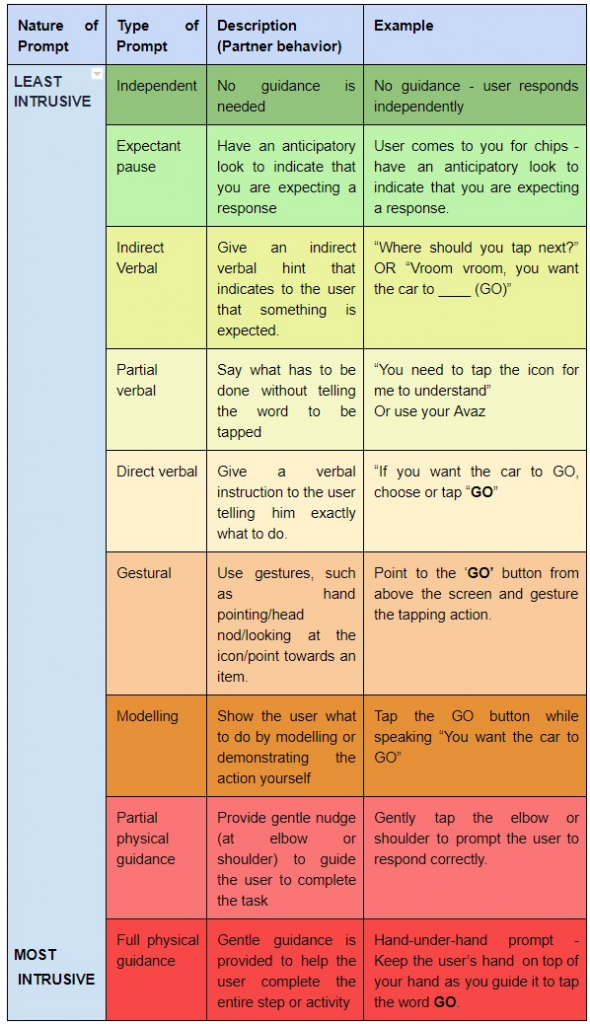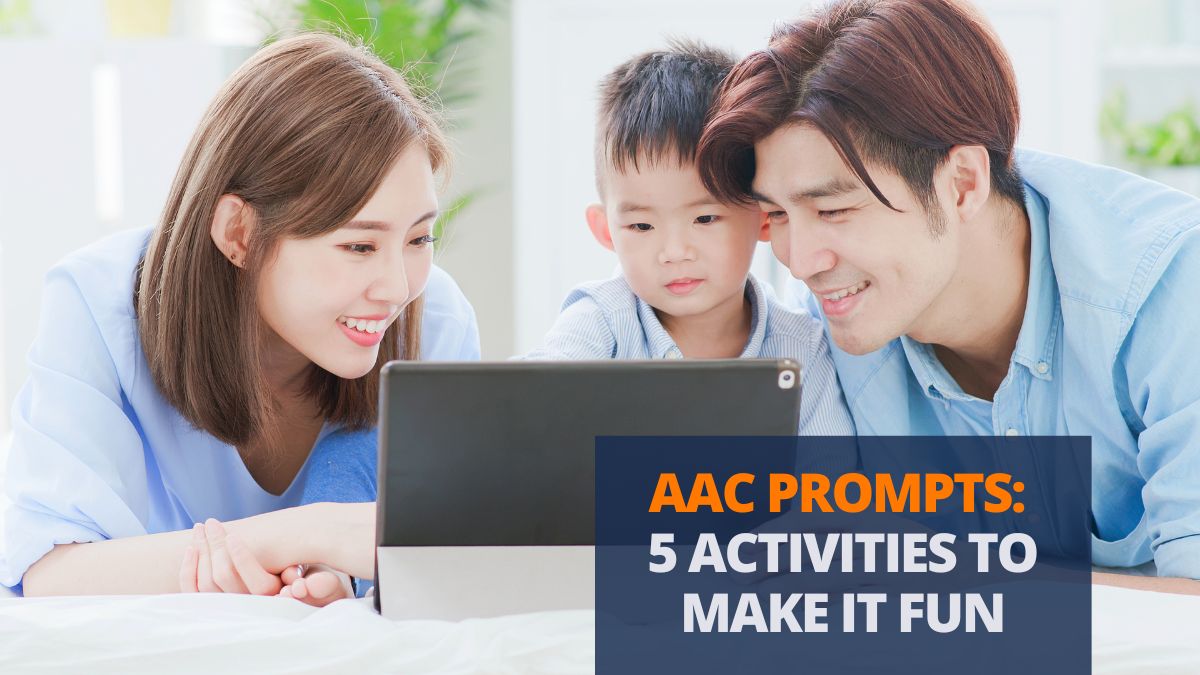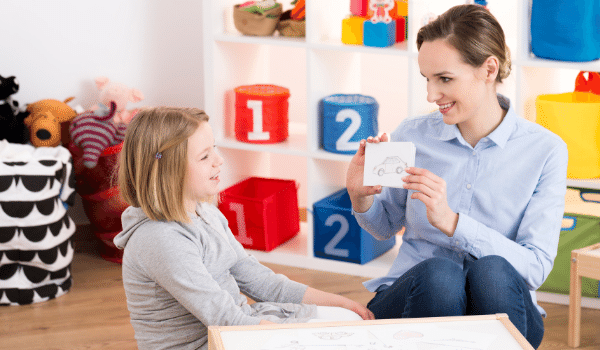Any new learning can be quite overwhelming for the user. New users can benefit from prompting, regardless of age, communication skills, or cognitive ability. (Find beginner tips for AAC Implementation here.

What is a prompt?
A prompt is a cue or instruction that is given before or during a user’s action or response. There are different types of prompts that you can use to motivate the user to learn and succeed.
What are the different types of prompts?
There are different types of prompts:
Verbal prompts, such as saying “Tap the picture of cookies!”
Gestural prompts, such as pointing to an appropriate icon on Avaz AAC app that remind them to use it.
Physical prompting. It usually includes hand under hand (which is largely recommended in literature) and that can be easily faded. Physical prompts also include taking the user’s hand and making them point to the appropriate icon. Physical prompting is less helpful and using them is not really advocated and it is extremely culturally sensitive (and it does not support safe practices that are important to protect vulnerability)
Prompting Hierarchy – Least-to-most prompting
Though prompts are very useful in teaching a new concept and working on the use of it, it is also important to use them carefully. Users become dependent on prompts easily and would seek an adult’s or partner’s help before they make any type of response. Research suggests the hierarchy of least-to-most prompting as it provides the user sufficient time to respond to a natural stimulus occurring in the environment. Prompting hierarchy refers to the order and different levels of support that can be used to help the user get the appropriate responses. Remember, as you decide the type of prompts you also need to think of ways to fade prompts over time. Regardless of how often we provide prompts or what type of prompts we provide, providing a model of the possible words suitable in the conversation is considered the most useful strategy we can use.
Let us look at various prompts ranging from least intrusive to most intrusive with encouraging the user to use the word ‘GO’ to make the car go.


The Powerful Pause
While using each prompt, it is most important to give an expectant pause and WAIT for the user’s response. The wait time can vary from 5-15 secs for the user to produce the expected response. When you say something, wait for a response. If the user says something, respond and move on. Give the next prompt in the hierarchy and WAIT for the response if the user doesn’t respond. If you don’t use enough wait time, you may be providing more prompts than needed. Remember, rushing through prompts essentially takes away opportunities for the user to respond.


Indirect Verbal
If the user does not respond, you can give indirect verbal prompts to help them construct a response.


What is Prompt dependence?
This occurs when a user needs (depends on) prompts in order to respond. In many cases a user is accidentally taught to wait for a certain prompt before responding.
Some reasons for prompt dependency are:
Over-use of prompts
Helping too much or helping too soon
Failure to fade prompts
Repeated use of prompt hierarchy across all the environments and partners thus hindering independent selection of icons
Prompt fading
If the user doesn’t respond, give the next one in the prompting hierarchy and WAIT for the response. Remember, rushing through prompts essentially takes away opportunities for the user to respond. Inappropriate prompting can result in prompt dependence, passive engagement, and of course poor use of communication tools. Hence it is very important to start fading prompts gradually but consistently so that the user doesn’t become dependent on the prompts. Start with the one that is most appropriate for the user, but regardless of the prompt used, work towards making your user independent of the prompt. Fade each type of prompt until the user is able to respond independently, without any prompts.
Courtesy: Compiled by Octave Speech and Hearing, Bangalore.




I love this! May i share it?
I am JUST starting to work with an 8 month old introducing AAC.
Sorry for the late reply.
We are glad that you liked this post.
Please feel free to share this with others.
My grand son 5 years who is with a cochlear implant and moderate autism is progressing well slowly .he has been given gestural and verbal prompts initially to greet or sk questions from others.
He is dependent on prompts and difficult to fade away.
Hello,
The time taken to fade away prompts differs from individual to individual.
Like the post mentions, using more wait time and offering encouragement using reinforcers can help.
Do you have this in Creole?
Hi Lisa,
It is not available in Creole.
Team Avaz